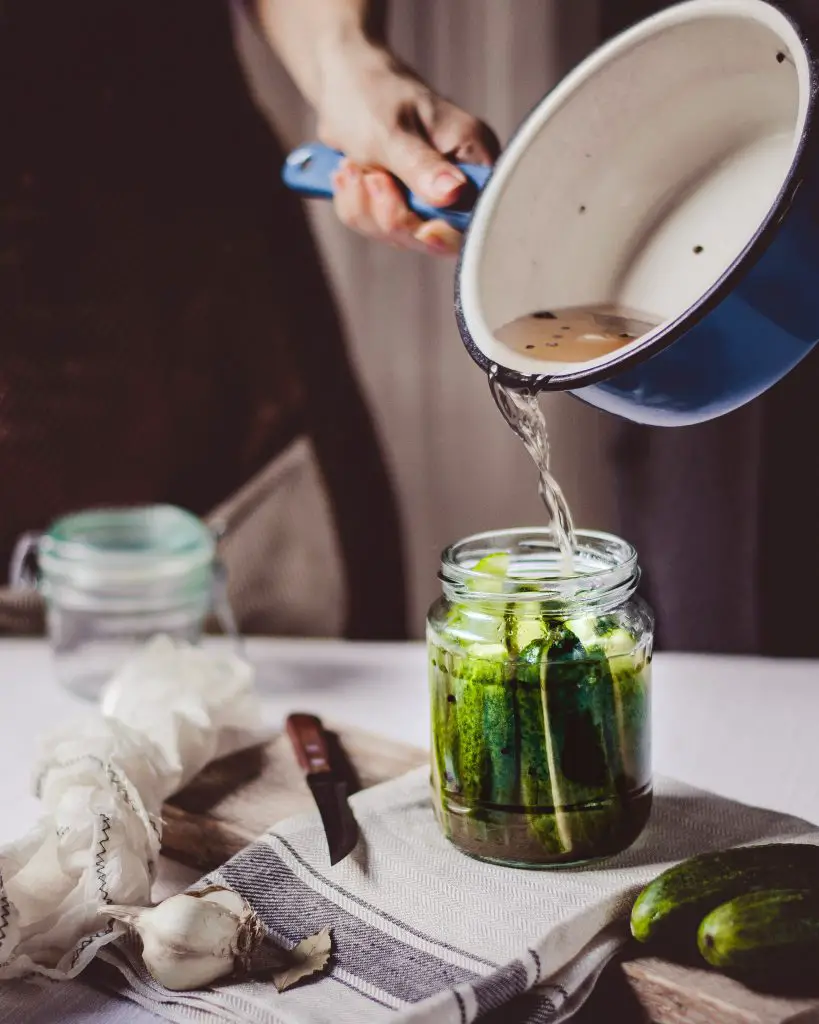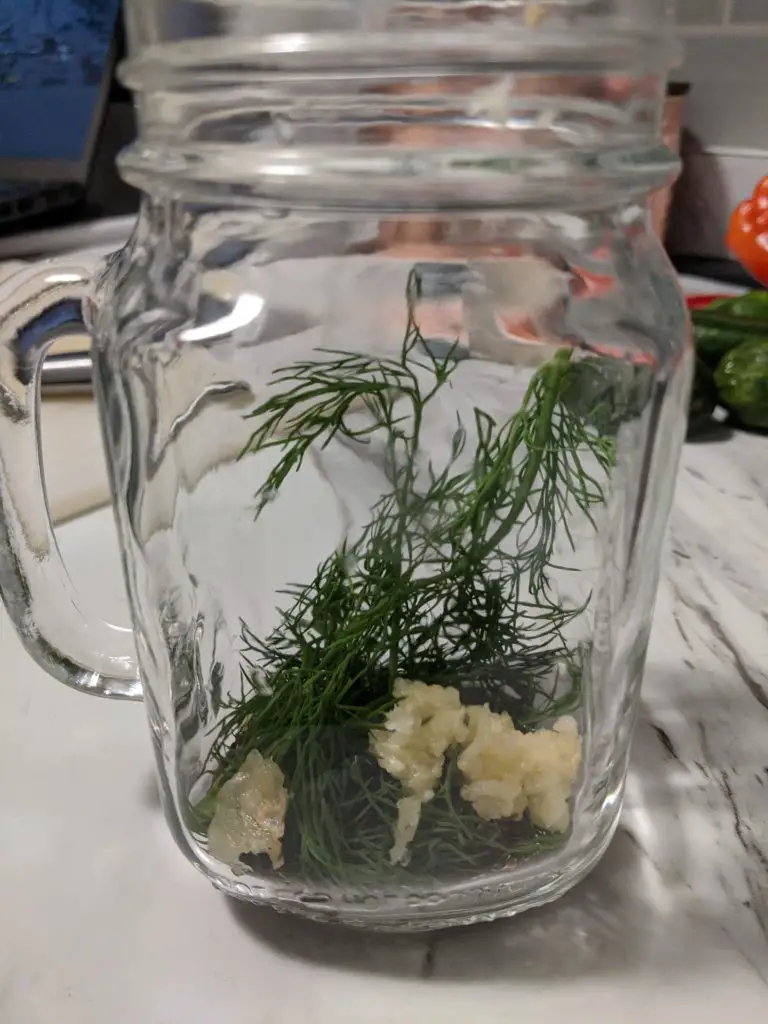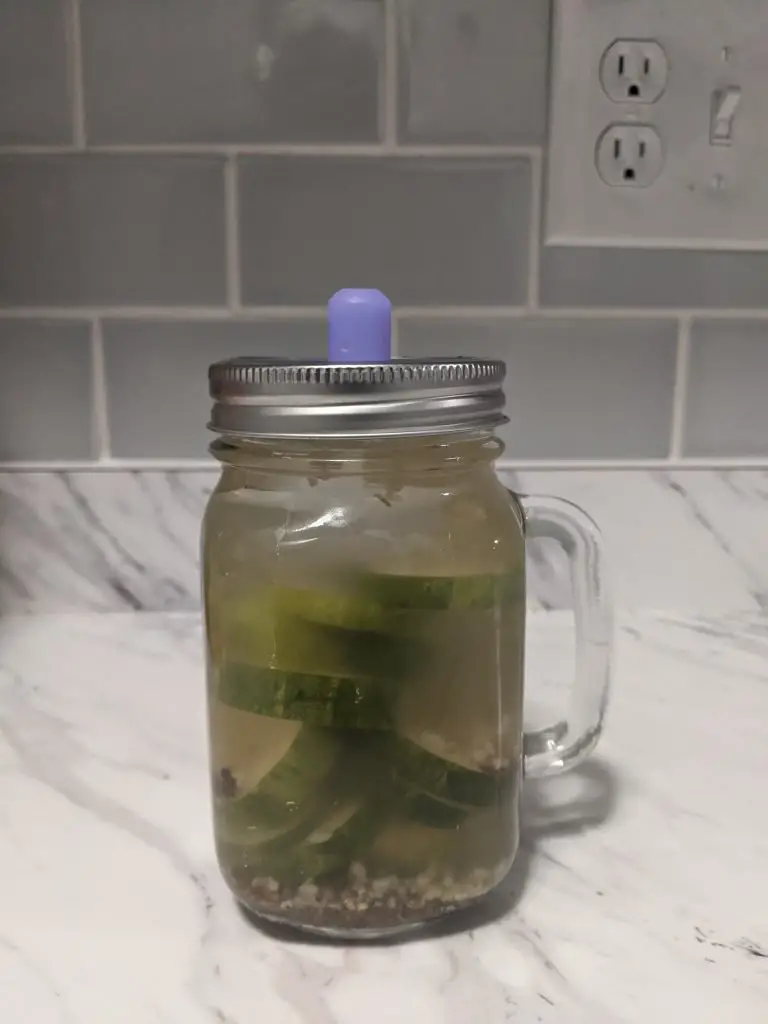While fermentation lets the “good bacteria” thrive, no amount of fermentation will save you from the bad bacteria that can make you sick. It is important to observe property safety guidelines, regardless if a recipe contradicts that.
To make pickles safely, adhering to standard guidelines of equipment sanitization, fresh ingredients, and proper storage techniques will ensure that you are operating within proper food safety guidelines.
There are many misconceptions about making pickles due to the myths around fermentation. There are clear rules to making pickles in a safe way that do not risk health or safety of those that will eat your pickles.
Tip 1: Sanitize All Your Utensils and Equipment
Sanitizing your equipment and storage apparatus is the first step in food safety. While fermentation is believed to eliminated the “bad bacteria” during the fermentation process, that is not true. The majority of the bad bacteria that can grow under common conditions.
You may hear the terms “sanitize” and “sterilize” used interchangeably. They are not the same. Sanitization is a reduction of microorganisms to a safe amount, while sterilizing is getting rid of all the microorganisms. This is why hospitals use “sterile” equipment. If your dishwasher has a “sanitize” setting, that works. If nothing else, hand washing with hot water and soap is sufficient.
While not part of making pickles, using clean spoons or forks to get your pickles out of the jar is also recommended. Many folks have used their fingers and not fallen ill but when serving guests, it is proper etiquette to offer some type of utensil with a jar of pickles. You wouldn’t feel comfortable picking meatballs out of a pot of sauce with a group of people, would you? The same should go for a jar of pickles.

Tip 2: Use The Right Ingredients
No matter what type of pickle you are making, the proper ingredients are paramount in ensuring you pickling the right way and keeping yourself and your guests safe.
No matter what method you making pickles with, proper cucumber selection is your starting point. Not everyone can use their cucumbers within a day of being picked, but aim to get as fresh as you can. Planning to use within a day of purchasing them is a good compromise. The cucumbers should be blemish free, green (not yellow), small and firm. We recommend using Kirby cucumbers with Persian cucumbers as a close second but feel free to experiment. No matter what cucumber you select, be sure to wash them before pickling, but do not use soap. The goal is not get the soil and debris off.
For refrigerator pickles, vinegar is a key ingredient. Because of this, using the right vinegar to keep your pickles safe is the firs step. Using a vinegar of at least 5% pH is key. pH is a scale used to specify the acidity or basicity of an aqueous solution. Acidic solutions are measured to have lower pH values than basic or alkaline solutions. Good vinegars to use are white distilled and apple cider. Homemade vinegars are a gamble due to how their pH levels can vary by batch.
Salt is another key ingredient in pickles, especially the lacto-fermented variety. Do not use table salt under any circumstances. Table salt has anti-caking additives that you do not want in your pickle brine. As a general rule, use Kosher salt or natural sea salt. You may see “pickling salt” for sale, this is also permissible. In general, you want natural salt without any additives and to make sure you dissolve it completely before placing your cucumbers in the brine. This can be achieved by heating up some of the water with salt in it and letting it cool off.
Water is often ignored as a crucial ingredient in the pickling process, regardless of the method you use. Soft water or distilled water is best, basically drinkable water. Hard water is no good as it has calcium and magnesium in it. These sounds like good minerals, but not for drinking water. To ensure salt dissolves fully, and to ensure sanitization, many recipes call for boiling water and letting it cool before use. Always remember water is really good at picking up impurities even though you may not see them in a glass.
No matter if your pickles are fermented or not, using ingredients like garlic cloves or dill, the fresher the better. These ingredients should be fresh and free of mold, no soft spots, etc. No amount of vinegar or fermentation will reverse the effects or mask the taste of spoiled ingredients. In addition to not tasting good, using the incorrect amount or spoiled ingredients can make you sick.

Tip 3: Store Your Pickles Properly
No matter the method of pickling, always store pickles in a dark place away from sunlight. For canned pickles this may be in cellar or cabinet, but for refrigerator pickles this will be in the refrigerator. In terms of fermentation this is important because fermentation will stop above 72 degrees Fahrenheit, not allowing the good bacteria to propagate and do what they need to do for your pickles. For this reason, sun pickles are deemed unsafe.
Storing pickles properly also means not keeping them too long. Different storage methods have different lengths of time they will keep your pickles fresh and safe to eat. This can range from 2 months to a full year based on your pickling method. We cover this in depth in our post on storing pickles. There are many storage mediums but the most widely used are mason jars. No matter type of jar you use, make sure that it has a airtight seal if that is what you recipe calls for. Mason jars used in canning need the lids replaced, as the canning process renders the seal ineffective after that use.

Even if you do everything perfectly, you may come across something unexpected, like a super soft pickle. Despite following all the guidance, that does not mean you should disregard something that doesn’t seem right. This could be taste, smell, softness, but really anything that alerts something is unusual. Follow your instincts and throw away anything that seems off, you have a sense of smell and taste for this reason. We always recommend not rolling the dice when it comes to food safety.
